Prosecco and Champagne are two sparkling wines that are often confused for one another but have distinct differences. Is prosecco champagne?
There are hundreds of different wines and wine pairings out there and they each complement certain dishes or good group wells. There are certain elements to each wine that makes them specifically suited to certain foods. For instance, the sweetness, texture, bitterness, acidic factors are just a few examples for pairing wine.
The Difference in Flavor Profiles
Both are two of the world’s most popular bubblies. While both types of wine share some production methods, there is a notable difference in their flavor profiles. The key factors that distinguish Champagne from Prosecco are the grapes used, the second fermentation and aging processes.
Champagne is produced in the departement Champagne of France using three specific grape varieties: Pinot Noir, Pinot Meunier, and Chardonnay. These grapes give Champagne its signature aroma and taste notes which include crisp citrus flavors, nutty undertones, and creamy texture.
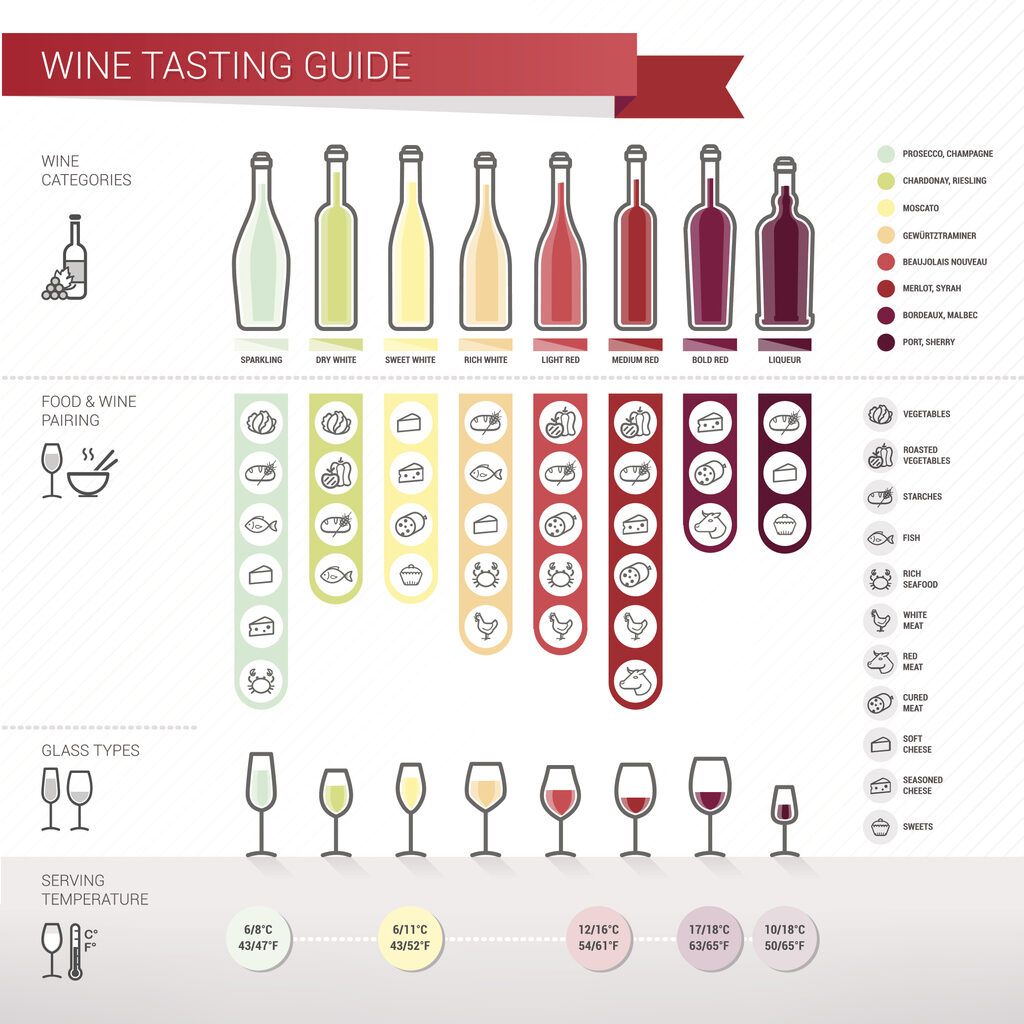
On the other hand, Prosecco is made from Glera grapes that grow exclusively in Italy’s Veneto area. This gives it a distinctly different flavor profile with fresh fruity notes such as green apple and pear.
Prosecco vs Champagne: Regions and grapes
Grapes, the quintessential fruit of vineyards around the world, are an essential ingredient in many of our favorite beverages. Among these, prosecco and champagne stand out as two of the most popular and esteemed drinks that make use of grapes. These sparkling wines are made using different types of grapes and techniques but have become synonymous with elegance, luxury and celebrations.
Champagne Grapes
This sparkling wine comes from the Champagne region in France. But did you know that there are several grape varietals used to make this delicious drink?
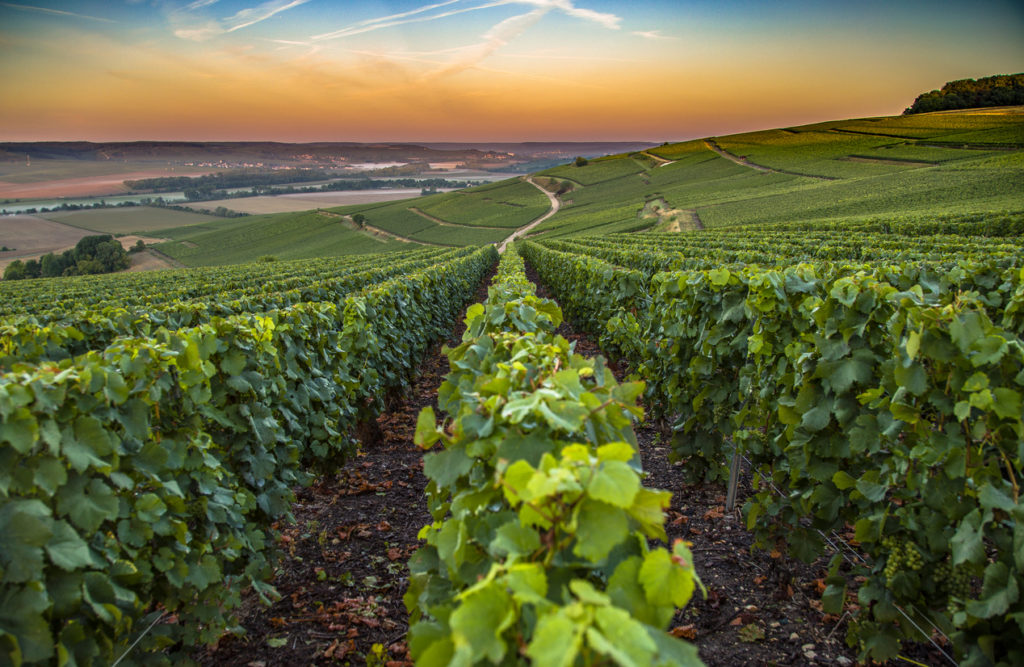
The first grape varietal is Chardonnay, which produces light and delicate champagnes with citrus and floral notes. It’s often blended with Pinot Noir or Pinot Meunier grapes to add complexity to the final product. They also add body and structure to final blend while also contributing red fruit flavors like cherry and strawberry.
Prosecco Grapes
This light-bodied Italian sparkling wine is known for its crisp fruitiness, refreshing acidity and delicate bubbles. Prosecco grapes typically grow in the Veneto area in North-eastern Italy where they enjoy warm summers along with cool nights which preserves their sugars while maintaining acidity levels.
The Glera grape variety is used to produce still wine for prosecco because it has low tannins and high acidity which makes it perfect for producing bubbly wines that are crisp, fruity and easy to drink.
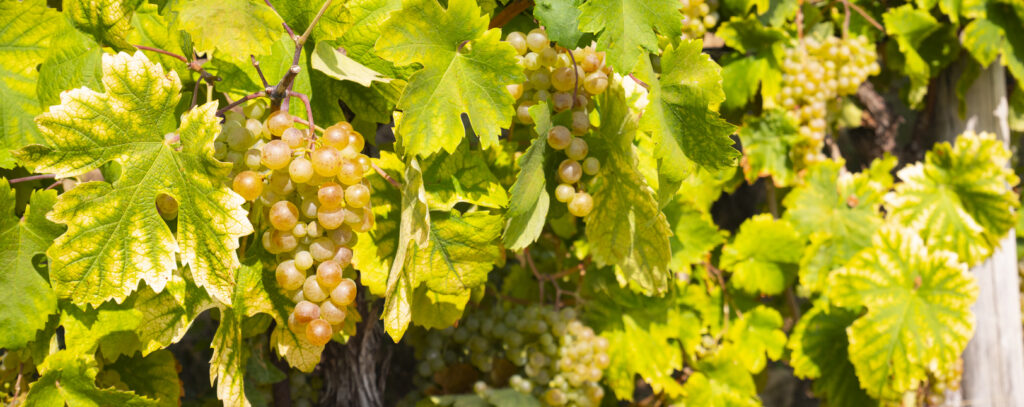
Regions
Proseccos and Champagnes are two of the world’s most famous sparkling wines, with unique characteristics that make them popular amongst wine enthusiasts worldwide. Both wines have distinct production regions, where specific factors contribute to their exceptional taste and quality.
Prosecco is produced exclusively in the Veneto area of Italy, where vineyards stretch from Conegliano to Valdobbiadene. The hilly terrain and mild climate of the prosecco region create ideal growing conditions for Glera grapes used to make Prosecco. This region has a long history of wine-making, dating back to ancient Roman times, which explains why Prosecco remains one of the most celebrated Italian wines.
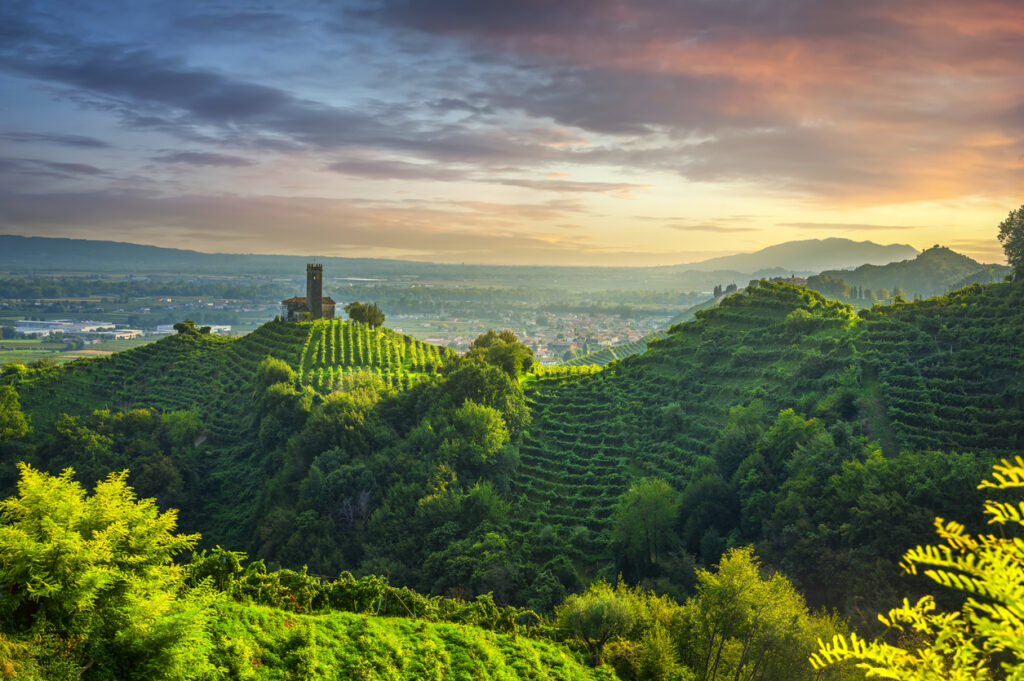
Champagne is produced in northeastern France’s Champagne region, an area located about 90 miles from Paris. This historic region covers five provinces: Aube, Marne, Haute-Marne, Seine-et-Marne and Ardennes.
Production Methods
Champagne and Prosecco are two of the most popular sparkling wines in the world. While both are known for their effervescence and celebratory nature, they differ in terms champagne method of fermentation. Champagne is produced exclusively in the Champagne region of France, while Prosecco is made primarily in Italy.
How is Champagne made?
The production method for Champagne is called méthode champenoise (champagne method) or traditional method. This involves a second fermentation step that takes place inside each individual bottle complex wine. The wine is aged on lees (dead yeast cells) for at least 15 months, giving it a creamy texture and complex flavor profile.
After aging, the bottles are “riddled” (turned by hand or machine to move the sediment towards the neck of sealed bottle) and then disgorged (the frozen sediment plug removed). A dosage of sugar syrup may also be added before corking to balance acidity.
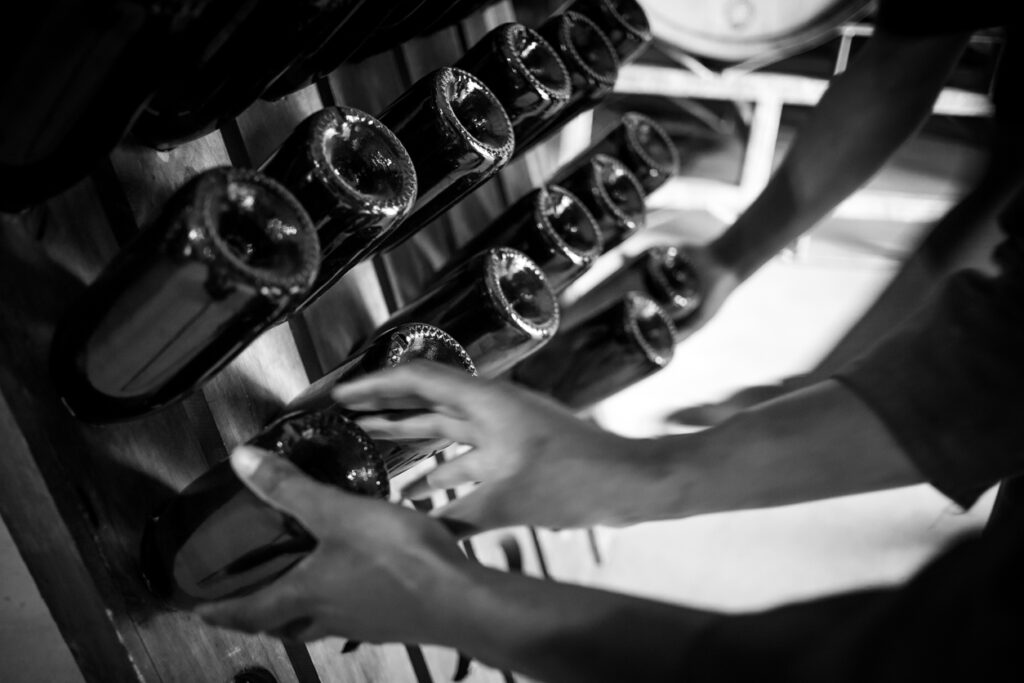
Production of Prosecco
Prosecco is a sparkling white wine that is synonymous with the Veneto area of Italy. The wine’s popularity has surged in recent years, with Prosecco sales now eclipsing those of its french companion in many parts of the world. One reason for this growth is its accessibility. Prosecco is often less expensive than other bubblies and can be enjoyed without any special occasion.
The secondary fermentation and methods behind Prosecco have played a significant role in its rise to fame. Unlike Champagne, which undergoes secondary fermentation in each bottle, for Prosecco the base wine undergoes the second fermentation process in large stainless steel tanks called autoclaves (charmat method).
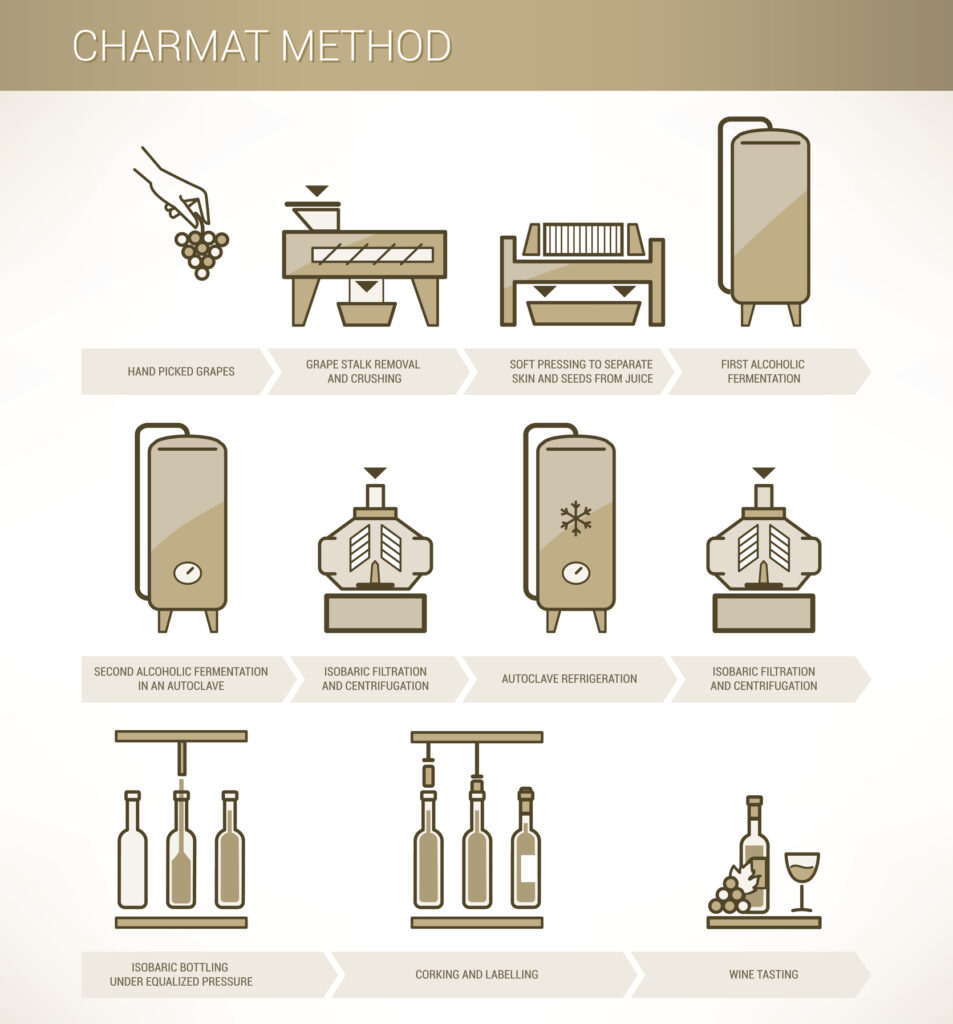
This method allows producers to make larger quantities of wine at a faster rate while maintaining consistent quality across batches. The still wine is only stored over dead yeast cells for 60 days.
Another key factor that sets Prosecco apart from other sparkling wines is the specific grape variety used for production: Glera. Only 15% of the prosecco may come from other grapes than the glera grape.
8 Key Differences – Prosecco vs champagne
Both are sparkling wine styles but there are a number of differences between them:
Region:
Prosecco Frizzante and Spumante wines can only be produced in the Veneto region in Northern Italy. Originally the term prosecco only limited the use of the grape. Since 2020 Prosecco is a D.O.C. (Denominazione di Origine Controllata) and even a D.O.C.G. (Denominazione di Origine Controllata e Garantita) for the Valdobbiadienne region.
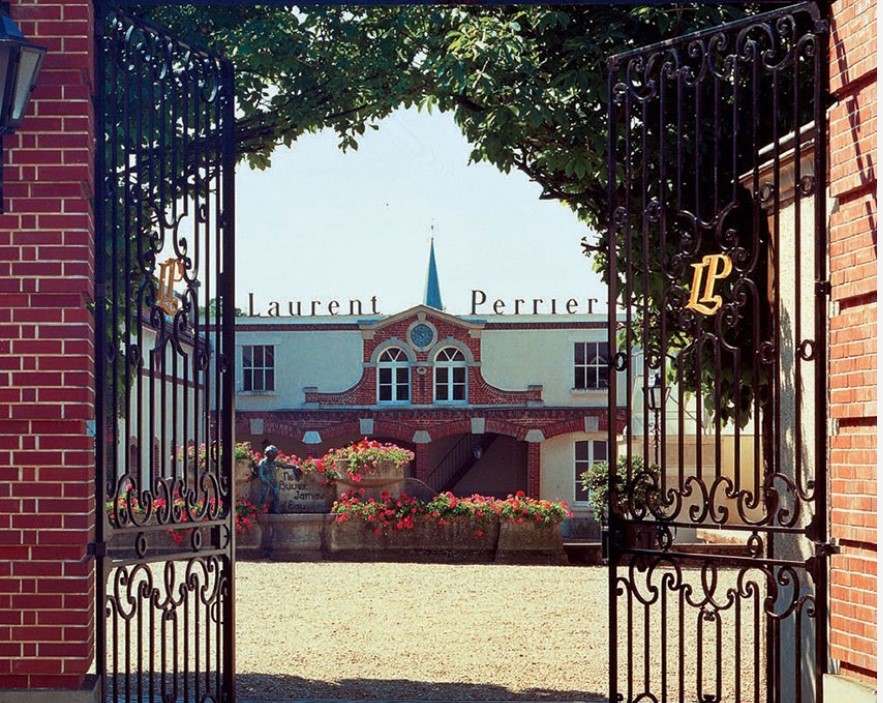
A sparkling wine can only be called champagne if was produced in the department Champagne, France from grapes which were grown there.
Grapes:
For prosecco 85 % of the grape juice for the prosecco wine must be from the Glera grape variety. The remaining volume can be from Bianchetta, Perera, Verdiso, Glera Lunga, Chardonnay, Pinot Blanc, Pinot Nero and Pinot Grigio wine.
The classic varietals which can be used by champagne producers are Chardonnay, Pinot Noir and Meunier. Other wines which are used in a minor volume are Pinot Blanc, Petit Meslier, Arbanne and Fromenteau (Pinot Gris). Rosé Champagne is made using Pinot Noir, Pinot Meunier grapes and white wine grapes like Chardonnay.
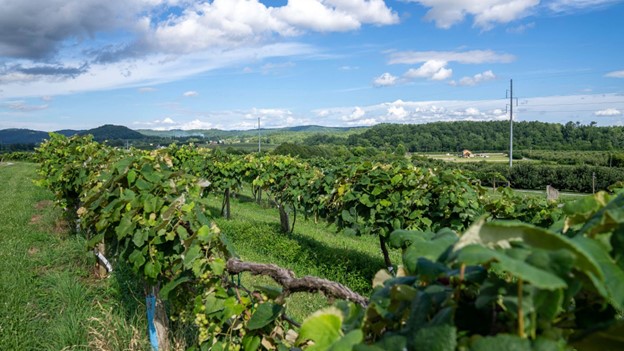
Bubbles – Prosecco vs champagne
Bubbles – Prosecco vs champagne
Sparkling wines which are made by the Charmat or tank method in the second fermentation step tend to have bigger bubbles more complex wine than sparkling wines which are made by the traditional method method.
The bubbles in champagne are also smaller and more persistent compared to other sparkling wines, giving it a smoother mouthfeel.
Carbon dioxide – Prosecco vs champagne
The different variants of prosecco wines, frizzante and spumante, have a bottle pressure of 2.5 and 3.5 bar respectively. Champagne bottles and other sparkling wine styles which are made by the traditional method have a bottle pressure of up to 8 bar
Production Method – Prosecco vs champagne
Prosecco style white sparkling wine is produced by the Charmat or tank method secondary fermentation process whereas Champagne is made based on the traditional method where the wines are fermented in the bottle after blending of the still wines. This increases the champagne cost.
Some wine makers from the Prosecco regions make sparkling wines by the traditional method and use other wines than those required for prosecco.
The Moraschi winery is a prime example for this modern way to combine both styles fine wine. This way they can offer a combination of flavors of prosecco and champagne.
Sweetness
Prosecco is normally sweeter than Champagne due to the tank method process where only part of the sugar is converted into carbon dioxide and alcohol.
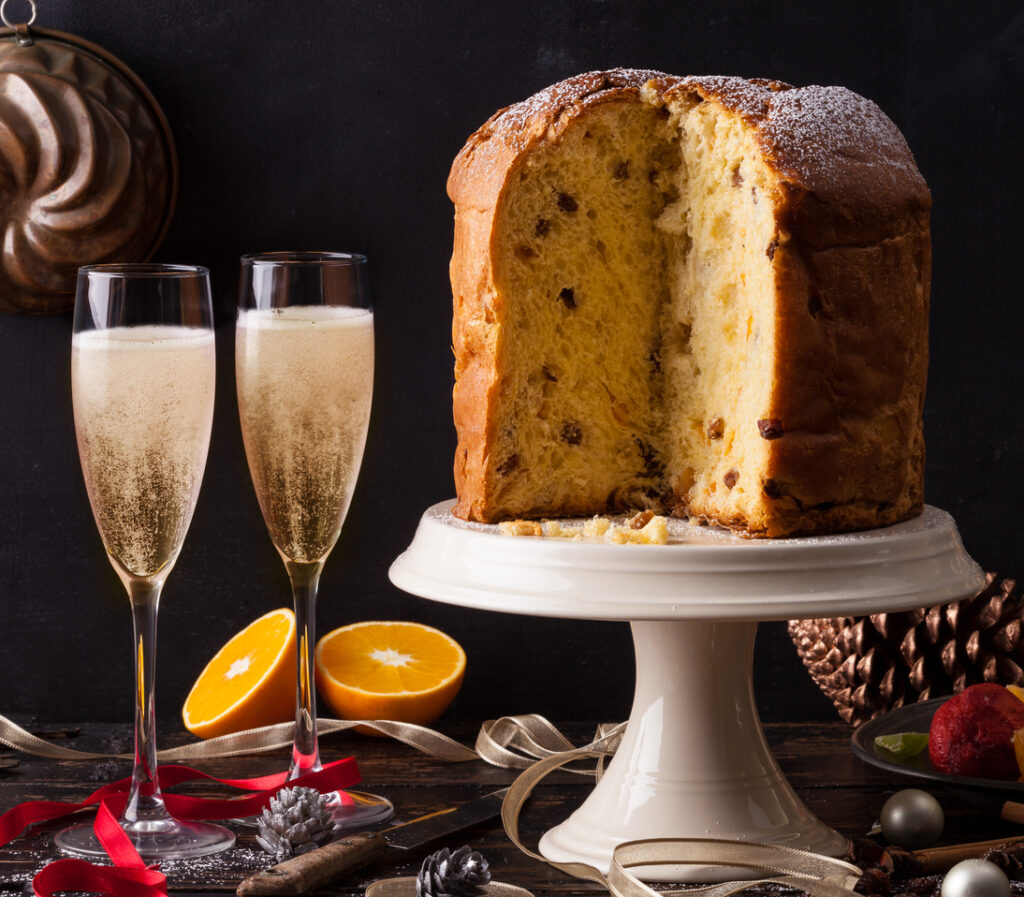
During the second fermentation of most champagne, in the bottle a large part of the residual sugar is converted into bubbles. The most popular champagne variety is brut champagne which contains less than 12 g/l residual sugar. Drier variants contain even less.
Taste Profiles
Prosecco and Champagne have their unique taste profiles that make different grapes of them stand out from one another.
Champagne is known for its crisp and acidic taste profile. It has a distinct aroma that is often described as yeasty or bready, with hints of citrus and apple notes. The aroma is caused by storage of the champagne over dead yeast cells in the champagne bottle for a prolonged time.

One of the most notable characteristics of Prosecco is its aroma. It has a fruity and floral aroma that is reminiscent of apples, pears, and peaches. This aroma adds to the overall sensory experience when drinking Prosecco. Additionally, the flavor profile of Prosecco typically includes citrus notes such as lemon or grapefruit, as well as subtle hints of honey or almond.
Food pairings
Prosecco is a sparkling wine that originates from Italy. This bubbly drink is perfect for celebrations, but it also makes an excellent pairing with food! The delicate flavors of Prosecco make it a versatile beverage that can complement a variety of dishes.
One classic Prosecco food pairing is with fresh seafood. The effervescence of the wine helps to cut through the richness of the seafood, while the bright acidity balances out any salty or briny flavors. Pairing Prosecco with oysters or shrimp cocktail will enhance their natural sweetness and provide a refreshing contrast to their rich texture.
The first rule of food pairing is to match the weight and intensity of your dish with that of your bubbly. For example, a light and delicate dish like oysters or sushi pairs well with a crisp and dry champagne like Brut or Extra Brut. On the other hand, a richer dish like foie gras or lobster bisque goes well with a full-bodied Champagne like Blanc de Noir or Vintage.
Price
Champagne and prosecco differ strongly in price. A bottle of prosecco ranges from 8 USD-30USD per bottle whereas you can find a bottle of cheap champagne, starting at 30-40 USD. Champagne and especially vintage champagne can be found at prices of several hundred USD per bottle.
Ageing
These two sparkling wines have different ageing potentials. Prosecco is made to be consumed within a year or two champagne ages better. Standard champagne can be stored up to 3-4 years. Vintage champagnes offer a potential to be aged up to 10 years.
Champagne and prosecco Coctails
Whether you’re celebrating a special event, hosting a dinner party or just want to unwind after a long day, these sparkling wine-based drinks are sure to impress. With their effervescence and unique flavor profiles, champagne and prosecco provide the perfect base for creating delicious and refreshing cocktails. Depending on the flavor you want to emphasize you can interchange champagne and prosecco.
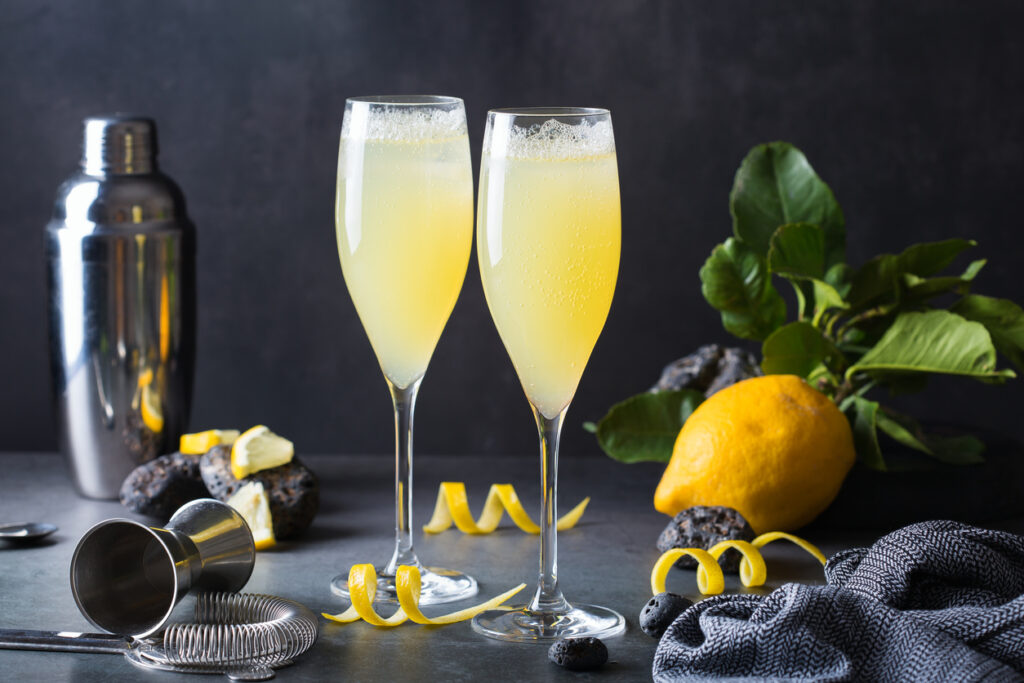
One of the most popular champagne cocktails is the classic French 75. This elegant drink combines gin, lemon juice, simple syrup and champagne for a light and bubbly libation that’s perfect for sipping on warm summer nights. Another favorite is the Bellini – made with peach puree called champagne and prosecco, this sweet cocktail is refreshing and satisfying in equal measure.
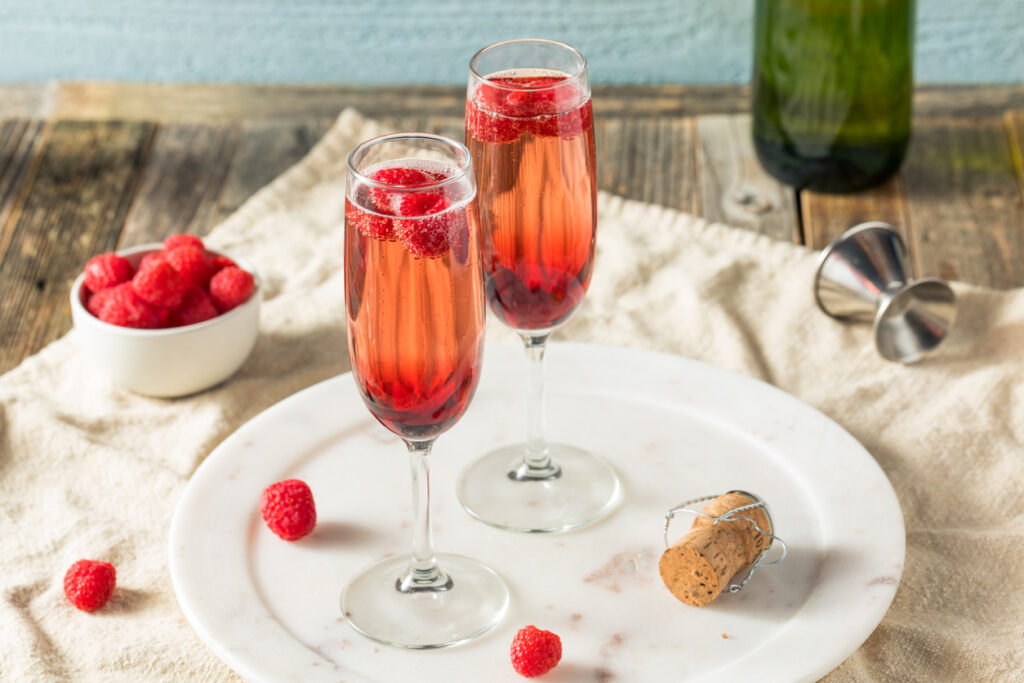
Kir Royal – a delicious blend of champagne and crème de cassis (blackcurrant liqueur). This cocktail is easy to make and looks stunning in a champagne flute. Simply pour 1 oz of crème de cassis into the bottom of each glass and top with chilled champagne. The result is a slightly sweet and, fruity drink with just the right amount of bubbles.
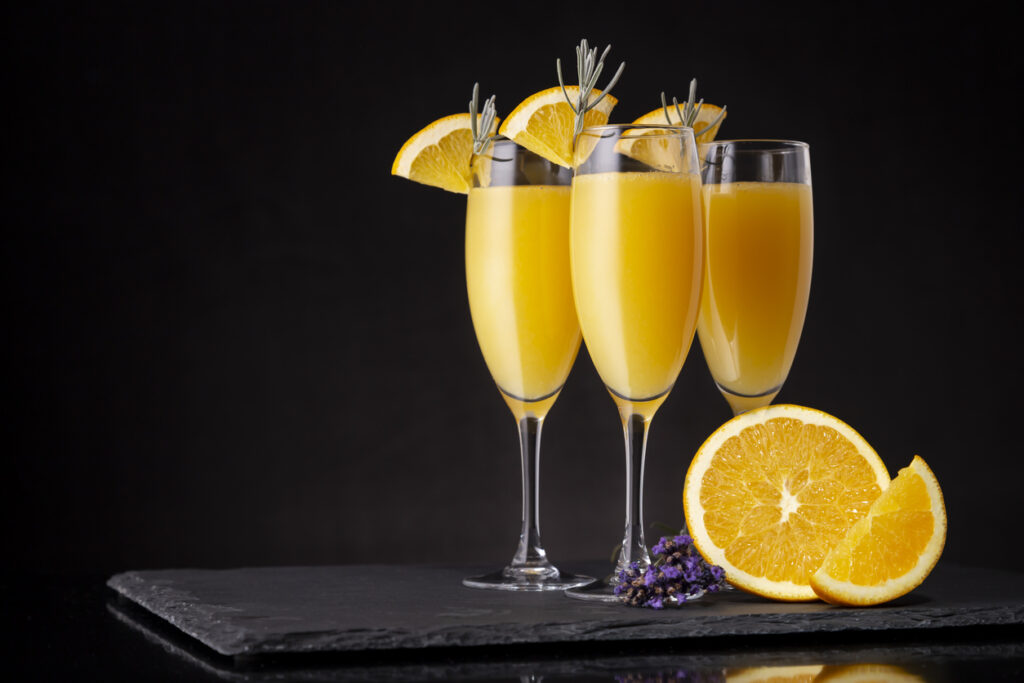
Next on our list is Mimosa – a classic brunch cocktail that never goes out of style. This drink is a mixture of equal parts of fresh orange juice and champagne. You can replace champagne and prosecco.

